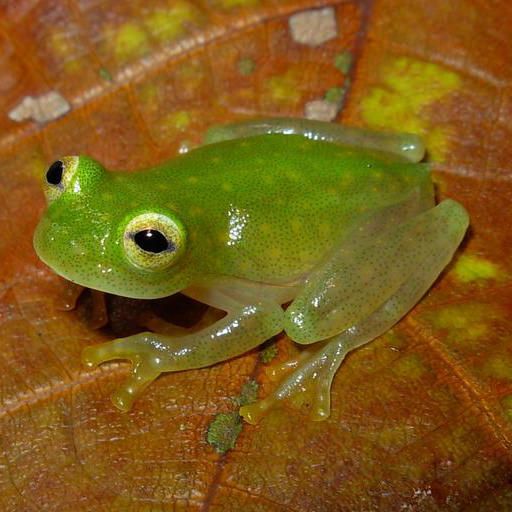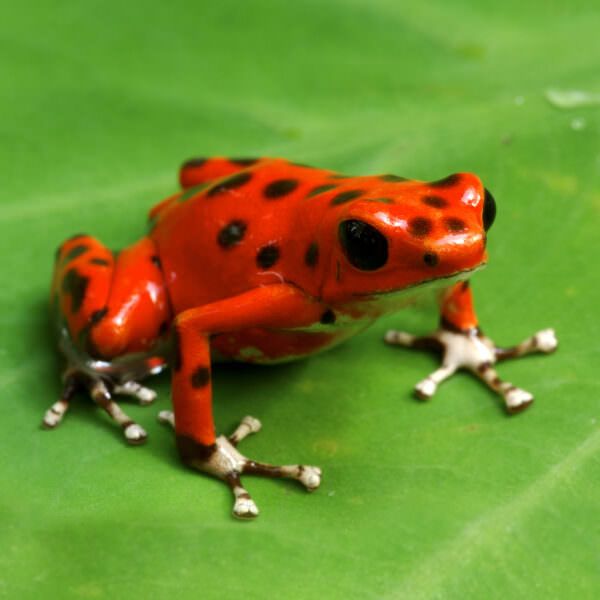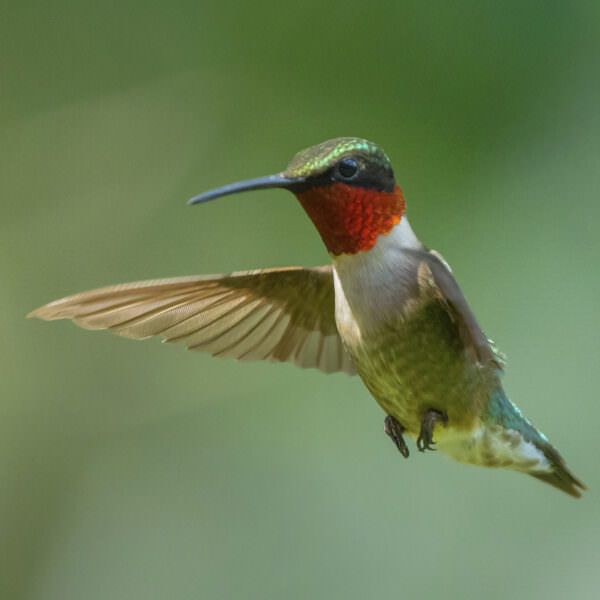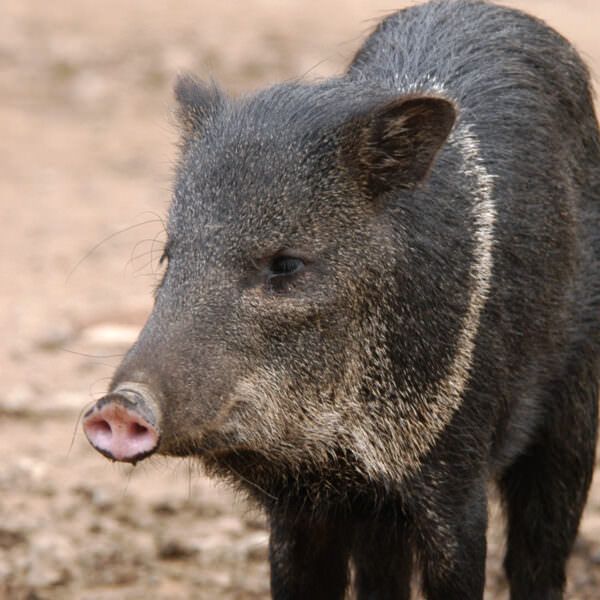Anatomy
Thanks to their big bulging red eyes, it’s not hard to recognize red-eyed tree frogs. This alien-like feature is a defense mechanism called « startle coloration. » When the frog closes its eyes, its green eyelids help it to blend in with the leafy environment. If the nocturnal frog is approached while asleep during the day, its suddenly open eyes will momentarily paralyze the predator, providing the frog with a few seconds to escape.
However, the frogs’ eyes are not their only fashion statement! To match the brilliance of their eyes, these frogs have bright lime green bodies that sometimes feature hints of yellow or blue. According to their mood, red-eyed tree frogs can even become a dark green or reddish-brown color. They have white bellies and throats but their sides are blue with white borders and vertical white bars. Their feet are bright red or orange.
Adept climbers, red-eyed tree frogs have cup-like footpads that enable them to spend their days clinging to leaves in the rainforest canopy, and their nights hunting for insects and smaller frogs. Male red-eyed tree frogs can grow up to two inches in length and females can grow up to three inches.
We're All In
Together, we're building a future where people and nature thrive. Sign up today and join our movement...
Habitat
First identified by herpetologist Edward Cope in the 1860s, the red-eyed tree frog is found in the lowlands and on slopes of Central America and as far north as Mexico. As with other amphibians, red-eyed tree frogs start life as tadpoles in temporary or permanent ponds. As adult frogs, they remain dependent on water to keep their skin moist, staying close to water sources such as rivers found in humid lowland rainforests. Red-eyed tree frogs can be found clinging to branches, tree trunks and even underneath tree leaves. Adults live in the canopy layer of the rainforest, sometimes hiding inside bromeliads.
Diet
Red-eyed tree frogs are carnivores, feeding mostly on insects. They prefer crickets, flies, grasshoppers and moths. Sometimes, they will eat smaller frogs. For tadpoles, fruit flies and pinhead crickets are the meals of choice.
Threats
Frogs have historically been an indicator species, evidence of an ecosystem’s health or its impending vulnerability. Not surprisingly, the world’s amphibian population has experienced a decline in recent years; research indicates that factors include chemical contamination from pesticide use, acid rain, and fertilizers, the introduction of foreign predators, and increased UV-B exposure from a weakened ozone layer that may damage fragile eggs. Though the red-eyed tree frog itself is not endangered, its rainforest home is under constant threat.
Sources
- Jukofsky, Diane. Encyclopedia of Rainforests. Connecticut: Oryx Press, 2002.
- Belize Zoo
- University of Michigan Museum of Zoology
- The IUCN Red List of Threatened Species



